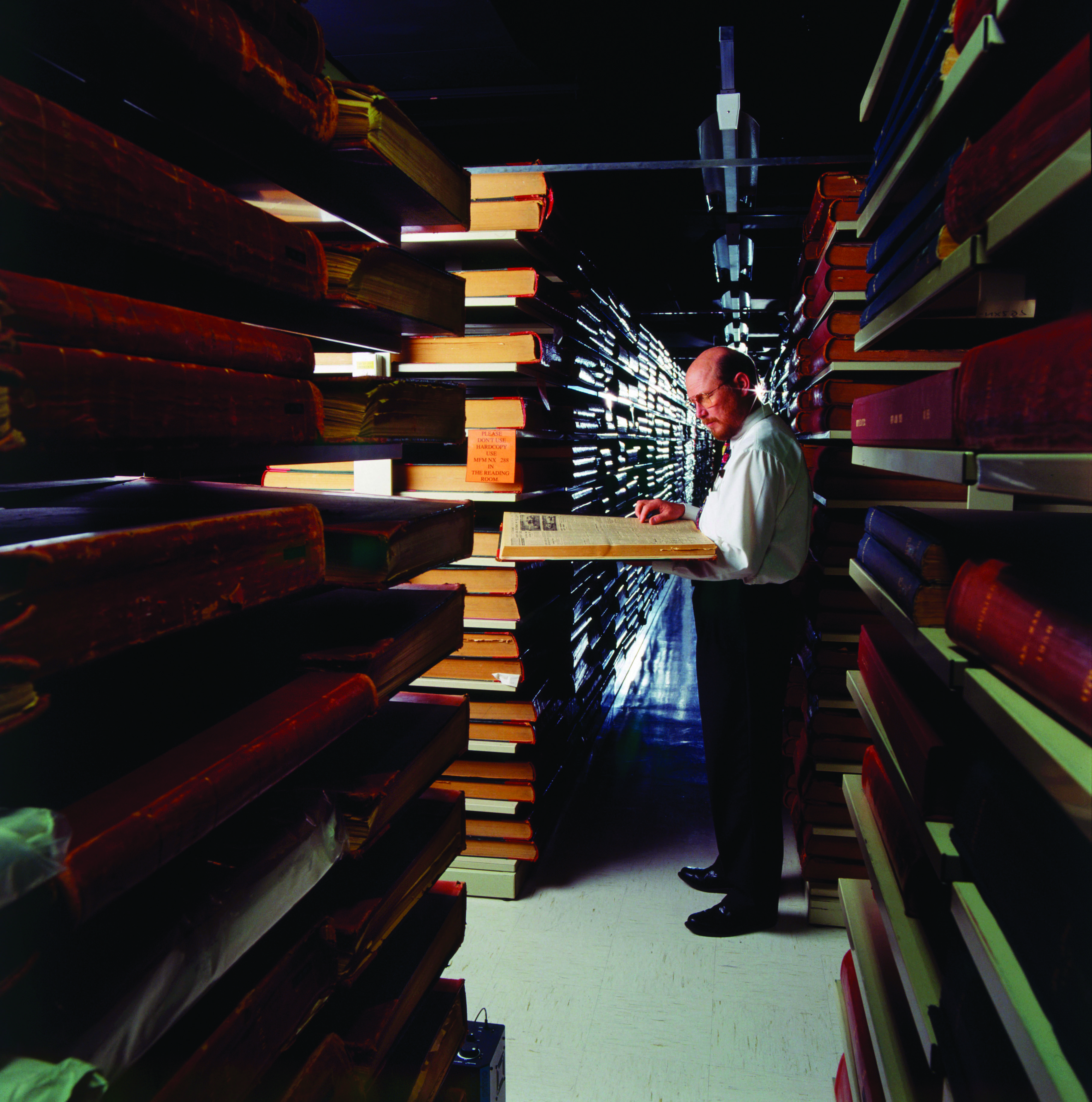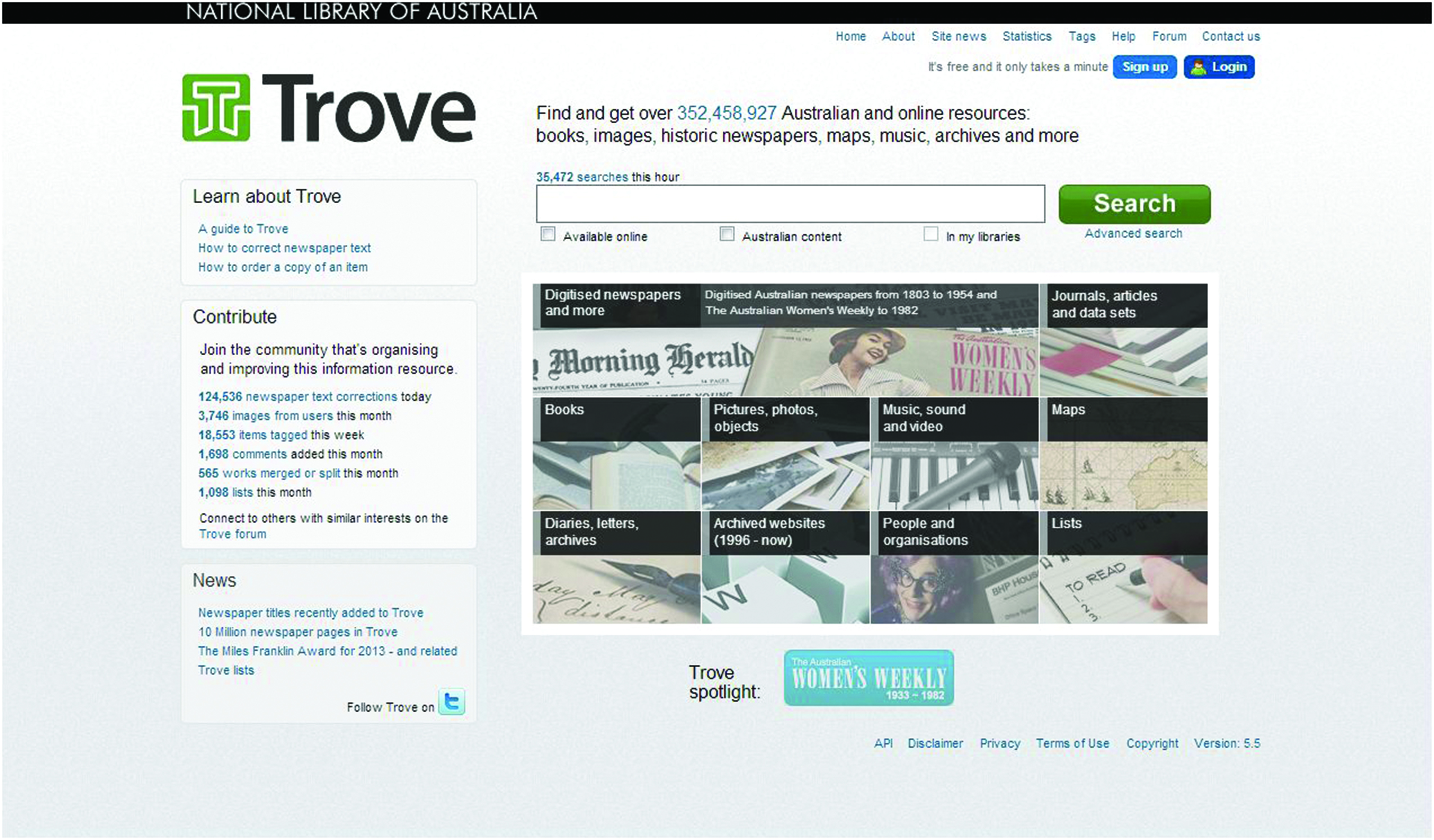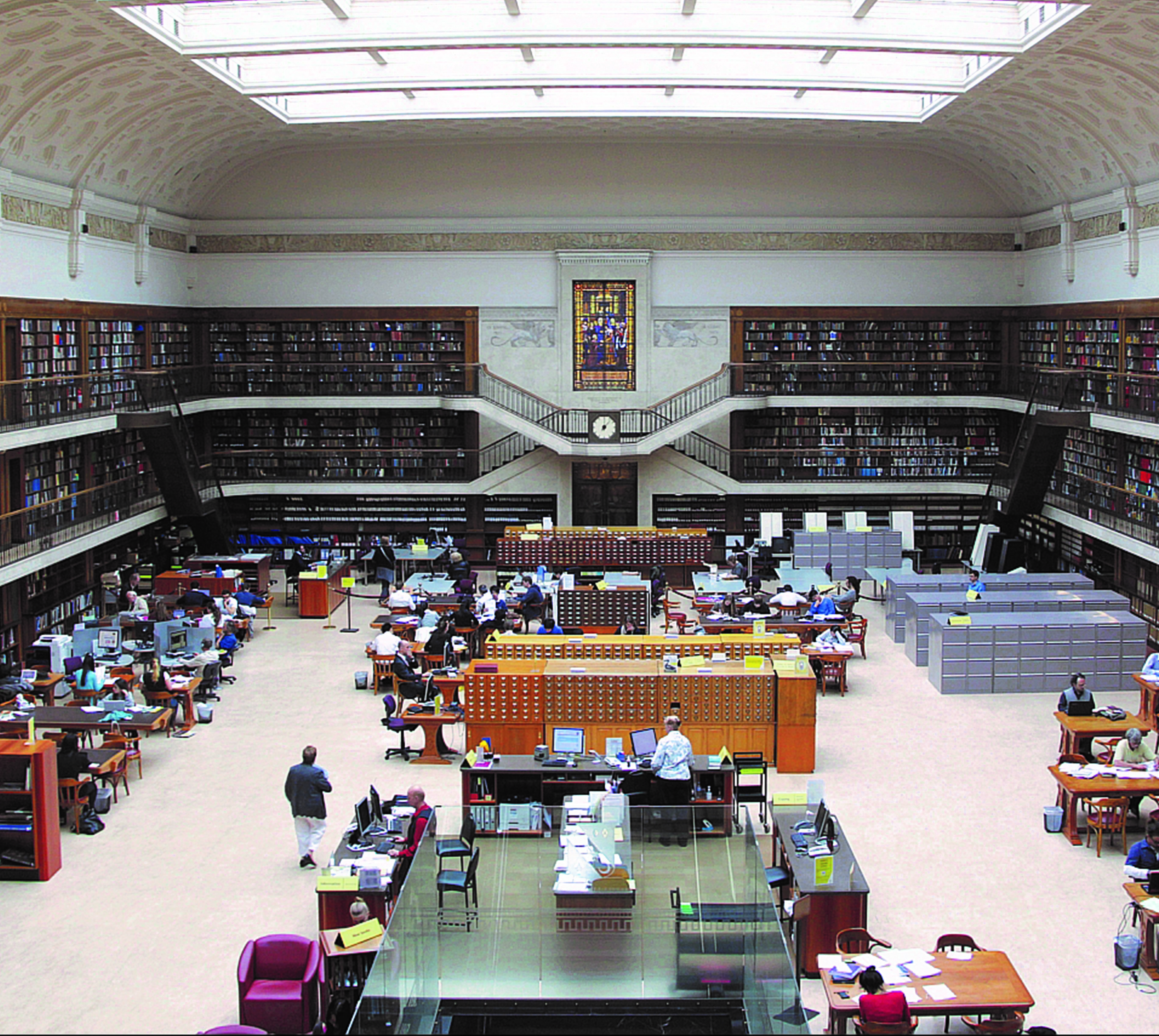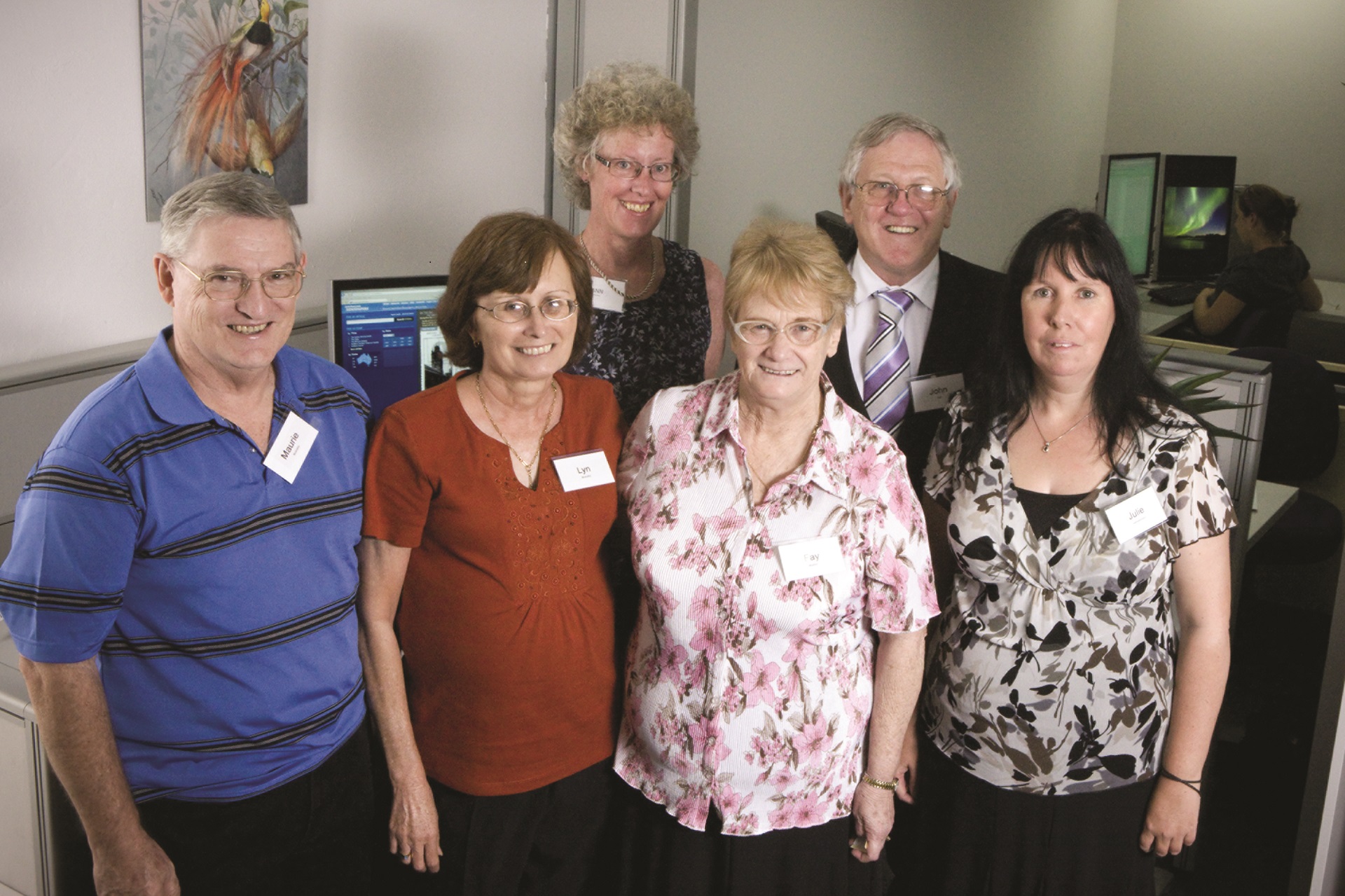National Library of Australia’s Trove: Achievements and Possibilities
Canberra’s National Library of Australia’s free online discovery service, Trove, is used widely by both Australian residents and the international community, making it not only an Australian resource, but a global one.

Since its launch in late 2009, Trove (trove.nla.gov.au) has become the National Library of Australia’s (NLA) most popular online service. Every second, three people search Trove, and one corrects a line of computer-translated newspaper text; every minute, someone tags an article; and every hour, a comment is added to an item, and an image is uploaded by an individual for inclusion.
Trove is a free online discovery service that links people across Australia and anywhere in the world to resources that are available online, or are available in Australian libraries, cultural institutions and research collections. Highlighting valuable material collected by more than 1,100 Australian libraries and over 100 galleries, museums, archives and historical societies, Trove links to more than 340 million resources in multiple formats.1
Trove allows any researcher or member of the public to discover and locate books, articles, conference papers, theses and other research resources; find and view pictures that are held by Australian collecting institutions; find and read full-text articles from the collection of digitised Australian newspapers issued between 1803 and 1954; find and explore websites from PANDORA, Australia’s web archive; and identify archival papers, letters, diaries and other collections. Trove goes beyond providing access to resources; users can also find and read biographies from multiple sources such as the Australian Dictionary of Biography, the Australian Women’s Register and the Encyclopaedia of Australian Science.
Trove usage is growing very rapidly. By April 2013, the portal saw an average of more than 60,000 unique visitors per day, and a daily high of nearly 80,000 unique visitors – nearly double the number of the previous year. Users are increasingly accessing Trove content and services via mobile devices, with more than 14 percent using smartphones and tablets. They also spend a much longer time on Trove than they do on the NLA’s website, catalogue or comparable services. When users arrive at Trove (with more than three-quarters of them coming directly from finding Trove resources via major search engines), they have plenty of content to explore and attractive ways in which to engage with that content.
Trove is used around the nation, with the use in each Australian state and territory closely matching the size of their populations. Australians in regional, rural and remote areas are particularly appreciative of their new access to national documentary heritage, as this comment from a regional resident shows: “Using the e-resources through NLA [Trove] is very useful when you live in a rural area and have to travel miles to access resources.” Indigenous elders in remote Western Australian communities are delighted to find images, newspaper articles and other resources about their communities in Trove, and in some cases are using these resources to share their stories with their young people. Australian indigenous culture is the longest continuously surviving culture in the world, and the NLA is proud to make it just that bit easier for indigenous peoples to connect with their culture and their history.

Trove is also a service used around the world, with more than 40 percent of usage by residents from other countries. While UK and US visitors dominate, Trove does receive visits from many Asian countries. Recent Indonesian visitors to NLA were astonished to find the wealth of Indonesian resources available through Trove, the result of the NLA’s very strong Asian collections, and Trove’s work in acquiring digital resources from major research aggregators.2 The NLA sees Trove as a vital way of making Australian culture more visible in Asia, supporting the Australian government’s aim to improve cultural understanding between Australia and the Asian region.3
Trove’s content base is also growing rapidly. In May 2010, Trove provided access to 100 million items. In May 2011, the number of information resources in Trove almost doubled to more than 200 million items, when access was provided to millions of journal articles contained in electronic databases to which Australian libraries subscribe. Built with the support of Australian state and territory libraries and with the cooperation of the vendors Gale and Informit, any visitor to Trove can find an article in one of these databases, view a list of Australian libraries subscribing to the database and, if the visitor is a member of one of these libraries, access and read the article immediately online.
This development was driven by the view that more use could be made of these electronic collections, particularly by the users of state, territory and public libraries. A review in August 2012 found that the use of the service is healthy and that it achieves the aim of making it easier for Australians to find licensed articles they are entitled to use. Use of the service has doubled in the last financial year, while the content grows with regular refreshes of data from vendors. The NLA was surprised to find that the highest users of the service were patrons of Australian university libraries, and that takeup by patrons of state, territory and public libraries was low and likely to continue that way. The review also found that acquiring, indexing and delivering the content is very resource-intensive, and that expanding the service was beyond the NLA’s means. The NLA will not be expanding the service beyond the current vendors and databases, and will prioritise Australian content for the service.
Transcripts of selected Australian Broadcasting Corporation (ABC) Radio National programmes were added to Trove in mid-2012, where they can be viewed in the context of many relevant resources such as books, articles and photographs. Transcripts from 4Corners (a current affairs television programme), The Science Show and The Philosopher’s Zone are accessible, and the library is in discussion with the ABC about adding transcripts from other Radio National shows, including The Health Report, The Law Report, Encounter, All in the Mind and Background Briefing (a current affairs radio programme).
Trove content was also augmented in 2012 following the digitisation of five non-English-language Australian newspapers: the Italian Il Giornale Italiano (1932–40); the German newspapers, Suedaustralische Zeitung/Südaustralische Zeitung (1850–51), Süd-Australische Zeitung (1860–74) and Adelaider Deutsche Zeitung (1851; 1860–62); and the Estonian Meie Kodu (1949–54). These newspapers were the first non-English-language newspapers to be delivered through Trove and formed a pilot project to identify issues associated with digitising non-English-language newspapers. Following the recent release of these newspapers, the Special Broadcasting Service produced a brief podcast about the project.4
Over the last year, newspapers from New South Wales, Queensland, South Australia and Western Australia have all been digitised and delivered through Trove. These include the Gawler Bunyip, the Western Star and Roma Advertiser, the Kalgoorlie Miner and the Launceston Courier. The state of Victoria has focused its efforts on digitising issues printed during World War I (1914–18) from a large number of newspaper titles, including the Bendigonian, the Gippsland Mercury, the Port Fairy Gazette and the Snowy River Mail. These are all regional titles, from communities where every town of any size has a war memorial honouring the young men who fought and died during that conflict.
The State Library of New South Wales will fund the digitisation of more than four million new pages of rural and regional newspapers – many of which were last published years ago – over the next three years as part of its Digital Excellence strategy.5 The titles of the newspapers to be digitised give a tantalising glimpse into the diversity of Australian newspapers and the audiences they served. They include The Cumberland Argus and Fruitgrowers Advocate, The Hebrew Standard of Australasia, The International Socialist, the Irrigation Record and the Miners Advocate and Northumberland Recorder, among many others. While the State Library’s project is a very large one, smaller local groups – including the Wagga Wagga District Historical Society and the Gilgandra Shire Council – have also raised sufficient funds to digitise, process and deliver their local historical newspapers through Trove. The NLA itself is raising funds to digitise post-1954 issues of The Canberra Times after gaining the publisher’s permission to digitise beyond the 1954 copyright date.

A Community Effort
Trove newspapers are extremely popular with the Australian public, with more than three-quarters of all Trove searches beginning in the newspapers zone. But newspaper users do not just read or use this content; they actively contribute to improving its quality. Optical character recognition is never 100 percent accurate on scans of old and sometimes not particularly legible microfilmed newspapers. Recognising this, the NLA opened up the newspaper transcripts to correction by any member of the public. The enthusiasm with which members of the public have taken up text correction of Australian newspapers is remarkable: 94 million lines of text have been corrected since mid-2008. The NLA has celebrated this national volunteer effort but has only recently estimated its financial value. The NLA calculates that the 250 work years of assistance equates to AU$15.5 million in value. This is a huge community contribution to a public good – one the NLA could not have achieved without “opening the archive” to the correctors.
Trove users do not only contribute by correcting text. They have also contributed more than 170,000 images of Australian life to the “Trove: Australia in Pictures” Flickr pool, which is then harvested into Trove so that this community-created content is viewed alongside the resources of collecting institutions. Trove users have added more than two million tags and more than 55,000 comments to Trove resources. They have created more than 35,000 lists on topics as varied as the visits of the Ballets Russes dance company to Australia and 1930s debates around the importation of margarine into Australia.
While many of these volunteers are individual correctors, taggers and listers working alone in their homes or offices on topics and at times that suit them, Trove users are increasingly self-organising. They communicate with each other via the Trove Forum, providing tips and tricks, responding to requests for help, and commiserating with each other on the rare occasions when Trove goes offline. A recent outage prompted a regular user to post this note of relief: “Trove, the love of my life, where were you yesterday? I arrived at your house and found a small note on the door saying ‘temporary technical problem’. Please, Trove, do not go out, wait for me faithfully, be my best friend forever.”

This excerpt from an email is representative of the community pride and engagement in Trove and volunteer hours invested in correcting text: “We began a Treasure Trover group late last year at the Rockhampton Regional Council Library. Now that our local Rockhampton newspapers are on the Trove website we meet weekly… Our big sky intention is to be the first newspaper on the Trove site that’s as near 100 percent corrected as possible… I’ve been surprised how invested and how much ownership the group has taken of our paper – we are meeting even in the middle of the flood crisis!”
Amy Lehmann is the organiser of Trove Tuesdays, a group that commits to blogging about content they discover in Trove every Tuesday.6 Every week, the group shares its latest finds, highlighting the different ways Trove can be used by family and local historians.
At a more formal level, academic groups are also organising to tag content relevant to specific research projects. For example, the large-scale South Eastern Australian Recent Climate History (SEARCH)7 project gathered a pool of volunteers to find and tag (using specific tags) newspaper articles around particular climate events. This content could then be further analysed and processed by scientists comparing documentary records with early instrumental weather data and paleoclimate records (e.g., ice cores and tree rings).
Each of these ways of engaging with Trove relies on trust. The NLA opened its archives based on trust. Trove users correcting text, adding tags or comments, or organising resource lists do not have to present credentials, provide any kind of bona fide proof of their knowledge, or jump through other bureaucratic “hoops”. They do need to sign a lightweight Terms of Use to interact with the service, but can choose whether to do their work anonymously or as a registered user. The Trove team does not routinely check any volunteer work, and only rarely has to respond to inappropriate comments or corrections, in most cases notified by another Trove user. This very open approach has had significant benefits for the NLA. One of the most common comments the NLA hears from those engaging with Trove content is how simple and easy it is to do so.
The NLA has had a minimal advertising budget for Trove, so the success of Trove’s user engagement really does seem to rely on the goodwill of the Australian public, their sense of a shared and worthy purpose, the ease with which they can engage and, of course, word of mouth or its Twitterverse equivalent. The NLA is aware that Trove users trust us – to keep Australia’s history safe, to keep their individual stories safe, and to manage their corrections, tags, comments and lists for the long term. It is mutual trust that has made Trove user engagement the success that it is today.
This sound foundation offers the potential for community engagement to be taken in new directions and to new levels. What they will be, only the future will tell! We do know that the release of the Trove API8 – which makes Trove content freely available for reuse in other services – is already spawning creative reuse by researchers developing alternative “generous” interfaces to large datasets, software developers working on software that extracts semantic meaning from large text corpora, and those wanting to include Trove resources in their own information spaces. This year, the National and State Libraries Australasia (NSLA) is sponsoring a prize for GovHack 2013,9 a major event where developers have a short time to create new and innovative ways of using open government data. We look forward to the results of many creative individuals “playing” with the huge Trove dataset and coming up with something new.
A New Way to Research
While Trove is certainly a locus for researcher activity in the digital humanities arena, it has also revolutionised historical research in Australia. The Australian library community’s focus on digitising newspapers reflects their significance as a major resource of national and international importance, documenting events, people, places and trends that may not be found elsewhere, with enormous value to research and learning.
Digitised newspapers have:
• provided unprecedented access to a selection of newspaper titles from across the country;
• supported researchers in fields as diverse as historical studies, immunology, design, linguistics, climate change, theatre studies and ecology;
• made an appreciable difference to the efficiency with which researchers operate – there is one place to go and to search across digitised newspapers, and you can search and get results instantaneously, thereby saving months of research time and travel costs. Researchers can focus on analysis, synthesis and dissemination rather than on information gathering;
• established a very successful mechanism, which has been extended through Trove, for NLA’s users to interact with collections and share information with each other; and
• enabled new lines of inquiry by providing a mass of content that can be interrogated in different and more sophisticated ways.
This digital resource – along with the many contextual books, images, conference papers, articles, maps, archives, sound recordings and more – supports a diversity of community and elite research and is much complimented. For example: “as an ecological researcher who had to fly to Perth and spend weeks in front of a newspaper microfilm reader for his PhD research, may I pass on my sincere thanks to you and your digitisation team for the newspaper digitisation… The information we have found will significantly challenge and change our understanding of these species and their historical declines. I hope through our efforts we will be better able to manage and conserve these critical species. Thank you!”
Creative endeavour of many kinds is also supported by Trove. When Felix Williamson, who plays cocaine and two-up king Phil Jeffs in the series Underbelly, was preparing for the role, he noted that he “read every newspaper article he could find on Jeffs in the National Library of Australia’s online research service, Trove”.10
Trove has also won recognition from peers. It picked up the 2011 Excellence in eGovernment award and the Australian and New Zealand Internet Award for Innovation in 2012.11 The judges of this competition commented that Trove “provides a fun, slick, dynamic discovery experience for the user. The initiative is a terrific resource for professional and amateur social researchers… It is unique as it allows users interactive ownership of the resources as it is the only site that allows the general public access to correct the electronically translated text of the digitised newspapers as well as add comments, tags, lists and merge and split works”.
What’s in Store?
The NLA recognises that in the fast-paced digital world such recognition can never be taken for granted. Providing a reliable and high-performance service is a must; building new services and enriching Trove’s content are essential if we are to meet new expectations of our existing Trove user base, and if we are to diversify our user demographic. These are not small challenges.
Over the next few years we will build Trove’s content by adding more digitised newspapers, working with more cultural organisations to make their rare and unique Australian collections more discoverable, and adding digitised books and journals as the NLA takes its first steps in the mass digitisation of these documentary sources. We will develop our content-building toolkit to make it easier to include Australian digital content from other services such as Europeana and Digital New Zealand. We aim to enrich content about Australian people by leveraging on the Virtual International Authority File, and by working with other biographical resources.
In 2013, we are redeveloping the Trove newspapers zone to accommodate the rapid increase in content, improve performance and deliver a mobile-friendly interface to this most popular of Trove zones. We will also deliver a Performing Arts “selective subject” view in Trove this year, and will be interested to see whether this approach to resource discovery will be sufficiently valuable to our users to justify investment in other subject-based views. We aim to improve a number of our services, e.g., Trove lists, over the next few years, and are always considering new possibilities for service. Our capacity to roll out service improvement is, of course, constrained by our resources, and by the realities of supporting the existing service – and its growing content base – so that it remains as easy and quick to use as it is now. Trove requires many servers, drivers, pieces of software, bandwidth and a talented team of IT professionals to meet all these needs. The Trove teams – both technical and customer-focused – are small but highly dedicated to their mission, and deliver huge value on a relatively modest resource base.
The NLA has engaged a market research company to evaluate Trove customer satisfaction. The results should reveal more about the Trove demographic: why users use Trove; help us to understand Trove usage patterns and where Trove sits in the research process; gain an understanding of the value users place on the service; what they like and dislike and how they would like to see Trove develop in the future. The research phase will be completed by July 2013, with evaluation of the results expected to take several months longer.
This will be the first time the NLA will have an overall view of the Trove user base. We know how many users we have; how often they return; which zones they prefer to use; the length of each visit; what they do on the Trove site; and where they come from in terms of countries and Australian states and territories. Recent research by the NLA’s Paul Hagon yielded interesting results on patterns of text correction,12 while research by the University of Canberra’s Sultana Lubna Alam and John Campbell focused on the motivations of those engaging in Trove text correction.13 With every new piece of research – whether by NLA staff, commissioned by the NLA or initiated independently – on Trove as a social phenomenon rather than as content source, we understand a little more about our huge user base. One measure of our success is, as Annie Talvé noted in a recent paper,14 that “to Trove” is now being used as a verb!
Developing Trove has been a five-year adventure for the NLA. It is now a mature service – with all the expectations that it brings – which is deeply embedded in Australia’s research infrastructure, and serves an astonishing variety of researchers and fields of enquiry. The NLA is committed to Trove as the primary mechanism for discovery of Australian documentary heritage, and looks forward to continuing “to Trove” for many years to come.
NOTES
-
Further information about Trove’s aims and content is available at: http://trove.Nla.Gov.Au/general/more-about-trove/ ↩
-
Viva news, 2013, http://us.Dunia.News.Viva.Co.Id/news/read/397898-begini-caraaustralia-koleksi-referensi-tentang-in ↩
-
The Australian government released an important white paper, “Australia in the Asian Century”, in 2012. The white paper and information on associated program activities are available at: http://asiancentury.Dpmc.Gov.Au/ ↩
-
The podcast is available at: http://www.Sbs.Com.Au/podcasts/naca/radionews/episode/220565/national-library-digitises-non-english-newspapers ↩
-
More information on the State Library of New South Wales’ programme is available at: http://www.Sl.Nsw.Gov.Au/about/projects/digital_excellence/index.html ↩
-
The group communicates via Twitter: https://twitter.com/search?Q=%23trovetuesday&src=hash ↩
-
A compendium of participating bloggers is available at: http://branchesleavespollen.Blogspot.Com.Au/p/trove-tuesday.Html ↩
-
Further information on this project led by the University of Melbourne is available at: http://climatehistory.Com.Au/ ↩
-
Information on the api, how to access it, and terms of use is available at: http://trove.Nla.Gov.Au/general/api ↩
-
Information about this event and links to products developed by past winners is available at: http://www.Govhack.Org/ ↩
-
Underbelly (http://en.Wikipedia.Org/wiki/underbelly_%28tv_series%29) was an Australian television phenomenon, winning both popular and critical acclaim. Williamson was quoted in the West Australian on 11 September 2011. ↩
-
The full citation is available at: http://www.Internetawards.Org.Au/index.Php/winners ↩
-
Paul Hagon’s slides are available at: http:// www.Information-online.Com.Au/pdf/tuesday_concurrent_2_1125_hagon.Pdf ↩
-
Their recent conference paper, “Crowdsourcing Motivations in a Not-for-Profit Glam Context: The Australian Newspapers Digitisation Program” is available at: http://dro.Deakin.Edu.Au/eserv/du:30049107/alamcrowdsourcingmotivations-2012.Pdf (and discoverable via Trove at http://trove.Nla.Gov.Au/version/188319518) ↩

